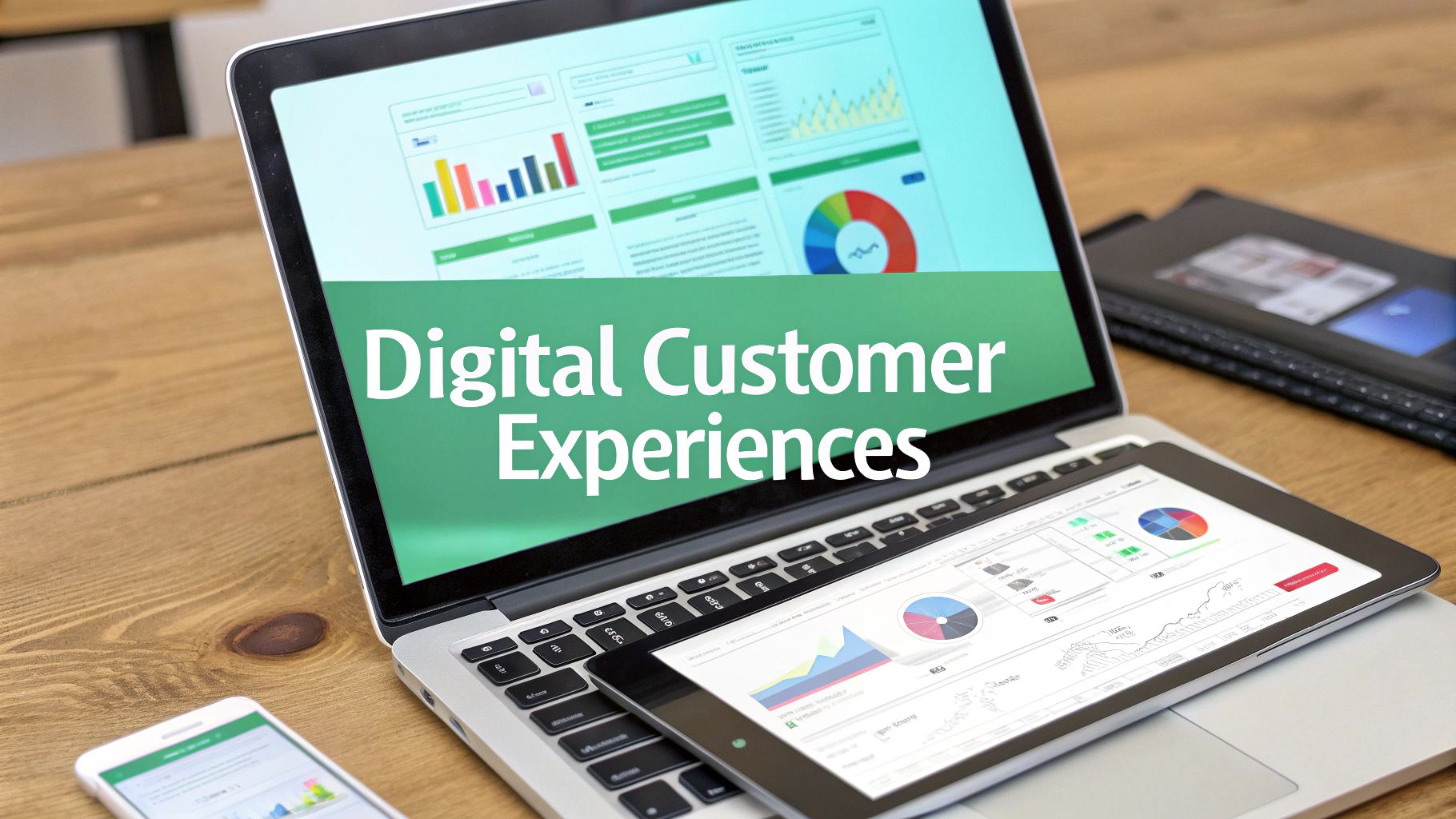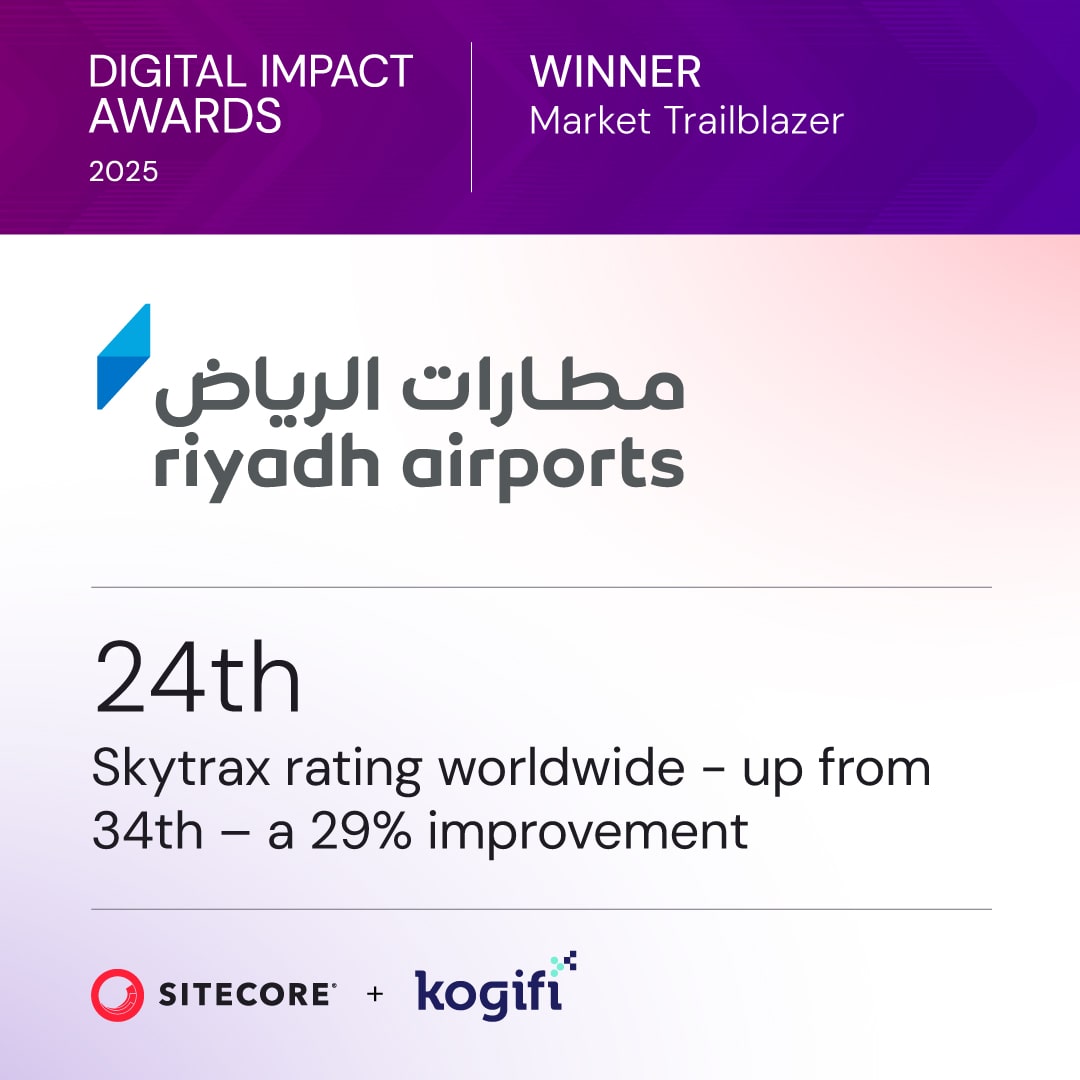Choosing the right Digital Experience Platform (DXP) vendor is a critical decision for enterprises. Here’s how you can ensure your choice aligns with your goals:
- Start with clear priorities: Define your business objectives, such as improving customer retention or streamlining operations. Map out customer journeys to focus on high-impact scenarios.
- Involve stakeholders: Build a cross-functional team from IT, marketing, and other departments to gather requirements and align on KPIs.
- Create a detailed checklist: List essential features like content management, personalization, analytics, and compliance standards (e.g., ADA, CCPA, SOC 2).
- Shortlist vendors: Research and issue RFPs to 5–7 vendors, focusing on functionality, scalability, and integration capabilities.
- Verify claims: Check client references, analyst reports, and vendor case studies to confirm reliability and performance.
- Test platforms: Run custom demos and proof-of-concept tests with your data to evaluate usability, scalability, and integration.
- Evaluate costs and support: Calculate total cost of ownership (TCO), including licensing, implementation, and maintenance. Assess support options like 24/7 availability and training programs.
- Check security and compliance: Ensure the vendor meets industry standards like ISO 27001 and provides robust data protection measures.
Quick Tip: Use comparison tables to weigh the pros and cons of each vendor across features, costs, and long-term viability. This structured approach ensures you select a platform that meets both current and future enterprise needs.
Vendor Evaluation and Selection Matrix
Define Your Enterprise DXP Requirements
Before diving into vendor comparisons, take a step back and clearly outline what your organization needs from a Digital Experience Platform (DXP). By defining your requirements upfront, you’ll ensure the platform you choose aligns with your broader digital goals. This preparation helps you evaluate platforms based on measurable criteria, steering clear of decisions swayed by flashy demos or marketing promises.
Identify Business Goals and Digital Objectives
Start by pinpointing your specific business goals. A DXP should directly address key objectives like improving customer retention, expanding into new markets, or streamlining operations - not just vague aspirations like "enhancing digital experiences." Document your current challenges, future goals, and the metrics you’ll use to measure success. For instance:
- Focus on personalization and analytics to boost customer retention.
- Use workflow automation to improve operational efficiency.
Additionally, map out your customer journeys, paying close attention to high-impact scenarios that can deliver measurable results. This groundwork ensures your team is aligned and ready to prioritize features effectively.
Involve Key Stakeholders
Because a DXP impacts multiple departments, it’s essential to involve stakeholders early in the process. Build a cross-functional team that includes representatives from IT, marketing, operations, compliance, security, and finance. This team should meet regularly to define objectives and key performance indicators (KPIs) for the DXP initiative, ensuring alignment with your overall business strategy and customer experience goals.
To gather input, consider structured methods like interviews, workshops, and surveys. These approaches help you collect a comprehensive set of requirements and minimize bias during the evaluation process. As Fred Brooks famously said:
"The hardest single part of building a software system is deciding precisely what to build".
With these insights, you can create a detailed feature and compliance checklist that reflects both organizational needs and stakeholder input.
List Required Features and Compliance Standards
Once your goals and stakeholder needs are clear, compile a detailed list of features and compliance standards to guide your vendor evaluation. Start with core DXP capabilities like content management, personalization, analytics, and API integrations, then layer in any industry-specific needs. For example, if mobile experiences are a priority, include features like responsive design, mobile analytics, and app integration.
Compliance is another critical area to address, especially for U.S.-based enterprises. Your checklist should include standards such as:
- ADA accessibility for inclusivity
- CCPA privacy requirements for data protection
- SOC 2 security standards for safeguarding information
Industry-specific regulations like HIPAA for healthcare or PCI DSS for payment processing should also be included where relevant. Organize your feature list into three categories:
- Must-have: Non-negotiable features
- Important: Features that strongly influence the decision
- Nice-to-have: Extras that add value but aren’t essential
Don’t forget to document technical requirements alongside business needs. Include details about your current tech stack, necessary integrations, scalability requirements, and performance expectations. For instance, consider user and content volumes, as well as geographic distribution, which could impact the platform’s architecture.
Finally, outline an implementation roadmap with clear milestones, timelines, and resource allocation. This checklist becomes the foundation for evaluating vendors and making informed decisions.
Build Your Vendor Evaluation Process
Turning your defined requirements into a structured evaluation process is key to matching vendor capabilities with your business goals. This approach removes the guesswork, ensuring that the solution you choose meets your needs rather than simply dazzling with flashy demos. It also minimizes the chances of missing critical factors that could affect your long-term success.
Create a Requirements Checklist
Start by converting your business objectives and stakeholder input into a detailed requirements checklist. Form a project steering committee with representatives from all relevant departments to guide the process and ensure decisions align with your organization’s priorities.
Divide your checklist into two sections: business use cases and platform use cases. Business use cases focus on user needs and desired outcomes, while platform use cases detail the features and functionality required to support your operations. For each category, outline specific scenarios based on your daily workflows.
Include key digital experience platform (DXP) capabilities such as content creation, e-commerce functionality, analytics, reporting tools, and personalization engines. Don’t forget technical needs like API capabilities, integration requirements, and performance standards.
Before reaching out to vendors, gather internal requirements through stakeholder interviews and workshops. This step ensures your checklist reflects the full scope of your organization’s needs and provides a solid foundation for issuing a Request for Information (RFI).
Once your checklist is ready, you can use it to narrow down potential vendors.
Shortlist Vendors and Issue RFPs
With your requirements checklist in hand, start researching vendors using analyst reports, customer reviews, and industry publications. Aim to create a manageable shortlist of 5–7 vendors, allowing your team to thoroughly evaluate each option without becoming overwhelmed.
When issuing a Request for Proposal (RFP), be clear and organized. Include your goals, timelines, required deliverables, compliance standards, SLAs, and submission guidelines. Use pre-drafted questions to assess functionality, standardized forms for vendor responses, and pricing tables for easy comparison.
Avoid using internal jargon and provide clear contact information for vendors who may need clarification. Include a timeline that specifies dates for presentations, negotiations, and final decisions.
A well-planned evaluation process can make a huge difference. Take the example of Chassis Brakes International (CBI), an automotive braking systems manufacturer. They used AI-powered vendor management software to streamline their selection process, cutting research and evaluation time by 90% while making more objective decisions using centralized supplier data.
After narrowing down your list, validate vendor capabilities through client references and market analysis.
Check Client References and Analyst Reports
To verify vendor claims, reach out to their current clients who operate in similar industries or share comparable technical requirements. Ask about their experiences with implementation timelines, ongoing support, platform performance, and any challenges they faced.
Additionally, industry reports can provide valuable insights. For example, Gartner's Magic Quadrant and Critical Capabilities reports offer data-driven evaluations of vendors. As Gartner explains:
"As a companion to the Magic Quadrant™, a Critical Capabilities report scores competing products and services against a set of meaningful differentiators. It reveals which options are the best fit in various use cases to help you focus on the vendors best suited to your needs."
These reports help you identify vendors that align with your needs and streamline decision-making with objective data about their capabilities and market positioning.
Stay informed about market trends and vendor performance. The digital experience platform market is projected to grow to $16 billion by 2028, reflecting ongoing advancements and opportunities in the field. Recent reports highlight shifting vendor leadership, with some platforms excelling in innovation and brand recognition, while others face challenges with pricing and complexity.
When reviewing analyst reports, focus on vendors that excel in areas critical to your goals. Look for platforms offering AI-driven analytics, advanced security features, and seamless integration with your existing systems.
Evaluate Platform Capabilities and Vendor Skills
After narrowing down your list of potential vendors, the next step is to dive deeper into what the platform can actually do and how well the vendor can deliver on their promises. This process involves assessing the platform's features, scalability, and the vendor's technical expertise and support.
Review Platform Features and Scalability
Start by closely examining the platform's features. During demos, pay attention to the user interface - make sure it’s intuitive and efficient for daily use. Even the most advanced features lose their value if the interface slows your team down.
Check for strong API support and a modular architecture that integrates smoothly with your existing tools, such as CRM systems, marketing automation software, and analytics platforms. Also, confirm whether the platform supports modern capabilities like headless content delivery, microservices, and cloud-native deployment.
Scalability is key for enterprise use. Ask for performance benchmarks to understand how the platform handles heavy traffic, large content libraries, and multiple users at the same time. It’s also worth asking about their largest client implementations and how they manage high traffic volumes without compromising performance.
Don’t overlook security. Look for features like data encryption, role-based access controls, and compliance with industry regulations. If your business operates across multiple regions, prioritize platforms that adhere to Privacy by Design principles to ensure customer data is handled securely.
Check Vendor Implementation Experience
A vendor’s track record with enterprise-level deployments can tell you a lot about their reliability. Ask for case studies and references from companies with similar technical needs to yours.
During vendor presentations, inquire about their approach to migrating from legacy systems and the typical timeline for enterprise deployments. Request references from clients who’ve completed similar projects in the last two years to gauge their consistency and reliability.
Long-term considerations like platform upgrades and maintenance are equally important. Ask about the upgrade process, potential downtime, and the level of support they provide during major version updates.
It’s also worth digging into the vendor’s technical team structure. Do they have dedicated solution architects and experienced project managers for enterprise clients? Understanding their team composition can give you confidence in their ability to handle complex requirements and provide strategic guidance throughout your project.
Finally, request detailed implementation roadmaps with clear milestones and timelines. Comparing these across vendors can help you spot unrealistic promises or vague deliverables that might signal trouble down the line.
Review Additional Services and Support Options
Consider what extra services the vendor offers to maximize your investment in the platform. If you’re planning a major website redesign or mobile app project, check whether they provide UX/UI design support to help create engaging digital experiences.
AI-driven personalization is becoming increasingly important for tailoring customer interactions. Ask vendors about their machine learning tools, natural language processing capabilities, and how these integrate with your existing customer data platforms. Request examples of how their solutions have delivered measurable results in real-world scenarios.
For enterprise-level deployments, reliable 24/7 technical support is a must. Look into their response times for different issue levels, escalation processes, and global coverage. Some vendors even provide dedicated support teams for enterprise clients.
Training is another area to evaluate. Vendors offering comprehensive training programs, detailed documentation, and active user communities can make it easier for your team to fully utilize the platform’s features.
If your organization operates globally, multilingual support is essential. Ensure the vendor can provide consistent experiences across different languages and time zones.
For example, service providers like Kogifi specialize in digital experience platforms and enterprise CMS solutions. They offer expertise in platforms like Sitecore, Adobe Experience Manager, and SharePoint, along with additional services in UX/UI design, e-commerce, and AI-driven personalization. Vendors with this breadth of expertise can deliver the comprehensive support needed to meet complex enterprise demands.
sbb-itb-91124b2
Compare Costs, Support, and Partnership Models
Once you've evaluated platform performance and vendor capabilities, it's time to dive into the financial, support, and partnership aspects of your relationship with a DXP vendor. This step isn't just about the upfront licensing fees - it’s about understanding the full picture: ongoing costs, the support framework, and the vendor's partnership approach.
To make a well-informed decision, you’ll need to break down and quantify all associated costs while considering how the vendor supports your long-term goals.
Calculate Total Cost of Ownership (TCO)
A thorough cost analysis of a DXP implementation should include every expense over several years. These costs typically fall into the following categories:
- Licensing or subscription fees: The recurring cost of accessing the platform.
- Implementation and professional services: Expenses for setup, customization, and integration.
- Internal resource allocation: The time and effort your team invests in managing and maintaining the platform.
- Ongoing support, maintenance, and hosting: Regular operational costs to keep the platform running smoothly.
- Training and upgrades: Investments in employee education and system improvements.
By detailing these costs, you can calculate a realistic total cost of ownership (TCO) that aligns with your enterprise's evolving needs and ensures you’re prepared for future growth.
Review Customer Support and Training Options
Effective support is more than just having a help desk on standby. A vendor should offer robust, round-the-clock technical support with quick response times for both urgent and routine issues. Dedicated account management is another key feature, as it provides a consistent point of contact for your business.
Independent reviews, such as those from G2, can offer insight into the quality of a vendor’s support services. Additionally, comprehensive training resources are critical. Look for vendors that provide role-specific training paths and clear documentation to empower your team, from marketers to administrators. This kind of training strategy not only speeds up adoption but also minimizes support issues and ensures your team can fully leverage the platform’s capabilities.
A strong support and training framework is a cornerstone of a vendor's broader partnership approach.
Evaluate Vendor Partnership Models
Many modern DXP vendors adopt Partner Ecosystem Solutions (PES), which align with composable architectures and MACH principles. When assessing a vendor’s partnership model, focus on the following areas:
- How their partner programs encourage collaboration and integrate technology and service capabilities.
- Whether they have a dedicated role, like an "Ecosystem Strategist", to drive joint efforts and foster collaboration.
- Their ability to create joint go-to-market strategies with solution partners, including clear value propositions and competitive pricing.
- The maturity and reach of their partner network, particularly for implementation, support, and maintenance.
Take, for example, providers like Kogifi. They go beyond basic platform implementation by offering ongoing strategic support for tools like Sitecore, Adobe Experience Manager, and SharePoint. Their services include regular platform audits and strategic advice in areas such as AI-driven personalization and omnichannel strategies.
Lastly, consider the vendor’s commitment to composable solutions and open ecosystems. This kind of flexibility allows your enterprise to stay agile and innovative, avoiding the pitfalls of being locked into rigid, proprietary systems. Such an approach ensures your business remains adaptable and ready for future challenges.
Make Your Final Vendor Selection
Once you've completed your evaluations, it's time to ensure the chosen DXP vendor meets all your enterprise needs. This phase involves a deeper dive into costs, support, partnerships, and rigorous testing to make an informed decision.
Use Comparison Tables for Decision Making
Comparison tables can help you objectively evaluate vendors, removing bias and ensuring each is judged on the same criteria. Focus on eight critical areas that will influence your success with the platform.
Start by assessing the range of features. Match your specific needs to the capabilities of each DXP, but don’t just check off boxes - dig into how well each feature supports your use cases. Next, consider vendor suitability by examining their financial stability, independence, and long-term viability, as these factors can shape the platform's future.
Integration is another key area. Your DXP must seamlessly work with your current martech stack. Test how each platform handles data flow, supports your APIs and databases, and integrates with other systems. The strength of the vendor's partner ecosystem is also essential for ensuring external support during implementation and ongoing maintenance.
Document the pros and cons of each platform based on your enterprise's specific needs. Include realistic cost breakdowns, covering hosting, data location, and deployment options. Additionally, review each vendor's product roadmap to ensure their future development aligns with your digital goals. Look for consistent updates and a clear strategy for growth.
| Evaluation Criteria | Vendor A | Vendor B | Vendor C |
|---|---|---|---|
| Range of Features | Feature alignment score and gaps | Feature alignment score and gaps | Feature alignment score and gaps |
| Vendor Suitability | Financial stability and market position | Financial stability and market position | Financial stability and market position |
| Integration | API compatibility and data flow capabilities | API compatibility and data flow capabilities | API compatibility and data flow capabilities |
| Partner Ecosystem | Network strength and local support | Network strength and local support | Network strength and local support |
| Strengths and Weaknesses | Platform-specific advantages and limitations | Platform-specific advantages and limitations | Platform-specific advantages and limitations |
| Cost and Licensing | Total cost of ownership over 3–5 years | Total cost of ownership over 3–5 years | Total cost of ownership over 3–5 years |
| Practicalities | Hosting, security, and deployment options | Hosting, security, and deployment options | Hosting, security, and deployment options |
| Product Roadmap | Future development alignment with your needs | Future development alignment with your needs | Future development alignment with your needs |
Divide your requirements into "must-haves" and "nice-to-haves" to avoid overcomplicating your selection process. Ask vendors for case studies that align with your industry or specific challenges to validate their expertise.
This structured evaluation will prepare you for a focused security and compliance review.
Verify Security and Compliance Standards
Ensuring the vendor meets security and compliance standards is crucial. Noncompliance with legal and regulatory requirements can lead to hefty fines, financial losses, and damage to your reputation.
Start by confirming the vendor adheres to industry-specific security standards like ISO 27001 and SOC 2 certifications. Include specific security clauses in your contracts, such as regular updates to security controls and restricted access to sensitive data on a need-to-know basis.
Require multi-factor authentication for vendor access to your network and confirm that customer data is encrypted both in transit and at rest. Additionally, review reports from vulnerability scans, penetration tests, and automated monitoring systems.
For enterprises concerned with data sovereignty and autonomy, look for vendors that prioritize these aspects. Some providers now offer sovereign platforms built on open-source components, giving you greater control over your tech stack and security measures.
According to Dropsolid, "Owning your technology stack means you're in the driver's seat regarding updates, patches, and security protocols."
Once security is verified, move on to hands-on testing with your data.
Run Custom Demos and Proof of Concept Tests
Generic product demos often fall short of showing how a DXP will handle your specific workflows and data. Custom demos and proof of concept (POC) tests give you a clearer understanding of real-world performance.
Design your POC tests around actual business scenarios, not theoretical ones. Use your own content, data, and workflows to evaluate critical features like content creation, personalization tools, analytics dashboards, and integration points.
Test scalability by simulating high traffic loads to ensure the platform can handle enterprise demands. Monitor response times during peak usage and check performance with multiple concurrent users.
Involve key stakeholders like content creators, marketers, and IT administrators during testing. Their feedback on usability and workflows can highlight potential issues that technical specs might not reveal.
Evaluate integration by connecting the DXP to your existing systems during testing. Track metrics such as page load times, publishing speeds, search accuracy, and overall system responsiveness. These results will provide concrete data to guide your decision-making process.
Consider working with experienced implementation partners during the POC phase. Companies like Kogifi can help design realistic testing scenarios for platforms like Sitecore, Adobe Experience Manager, and SharePoint, ensuring your tests reflect post-implementation performance.
Focus on speed, quality, cost, and support when making your final selection. The vendor that excels in your POC tests, meets your security requirements, and fits within your budget is likely the best choice for your enterprise.
Key Takeaways for DXP Vendor Evaluation
When evaluating a Digital Experience Platform (DXP) vendor, there are several critical points to keep in mind to make an informed decision.
Choose a vendor that combines technical strength with strategic alignment. This means prioritizing platforms that offer flexibility, customization, and the ability to scale seamlessly. The platform should handle not just increased traffic but also expanding content, data, and user interactions. Cloud-based infrastructure plays a significant role here, as it enhances scalability and ensures smoother integration with your existing technology stack.
Security and compliance should be at the forefront of your evaluation. These elements aren't just about risk mitigation - they can also drive productivity and speed up product rollouts when implemented effectively.
When considering costs, take a holistic view of the total cost of ownership. This includes more than just licensing fees - factor in subscriptions, professional services, hosting, training, and ongoing maintenance. Remember, the most expensive option isn’t always the best, and the cheapest may lack the enterprise-grade features you need.
Vendor stability and the strength of your partnership with them are just as vital as the platform's technical capabilities. Look for vendors with a proven track record, clear communication, and product roadmaps that align with your digital transformation goals. A stable, transparent partnership fosters open feedback and builds a foundation for secure, efficient collaboration over time.
As one expert put it:
"Given the importance of your technology choice and the resources and time required for implementing a new Digital Experience Platform (DXP) or Content Management System (CMS), ensuring a thorough and reliable selection process is paramount."
Adopt a Composable Mindset
The idea of being “composable” extends beyond technology. Gartner’s Irina Guseva emphasizes this shift:
"You need to be internally ready to be composable. Composable not only refers to the technology and architectures, but also to composable business and composable thinking."
This mindset influences how teams approach content creation, customer experience design, and system integration, requiring a more adaptable and modular way of operating.
Test in Real-World Scenarios
Generic demos won’t give you the full picture. To truly understand how a platform will perform, test it with your actual data, workflows, and user scenarios. Involve content creators, marketers, and IT administrators in this hands-on process. This approach uncovers usability challenges that technical specs might overlook and ensures the platform meets your specific enterprise needs.
If you're working with platforms like Sitecore, Adobe Experience Manager, or SharePoint, engaging experienced implementation specialists - like Kogifi - can help you create realistic testing scenarios. This ensures your evaluation aligns with real-world performance expectations.
Ultimately, the vendor that excels in proof-of-concept testing, meets your security and budget requirements, and offers a strong partnership potential is best positioned to support your enterprise for the long haul.
FAQs
What should I consider when setting business goals to choose the right DXP vendor?
When setting business goals for choosing a Digital Experience Platform (DXP) vendor, it's crucial to ensure the platform aligns with your company's strategic priorities while addressing the specific needs of your industry and audience. Prioritize features that support growth, such as scalability, smooth integration with your current tools, and adaptability to your business's future demands.
Don't overlook the total cost of ownership. This includes not just the initial implementation but also ongoing maintenance and potential upgrades. Additionally, assess the vendor's support services and customization options to determine how they can contribute to your long-term success. By focusing on these key aspects, you'll be in a stronger position to select a platform that supports your enterprise's growth and operational goals.
How can enterprises make sure a DXP platform integrates smoothly with their current technology stack?
How to Ensure a DXP Platform Fits with Your Tech Stack
To make sure a Digital Experience Platform (DXP) works well with your current technology setup, start by focusing on platforms with robust API capabilities. These APIs make it easier to connect the DXP with essential tools like CRM systems, ERP software, and marketing automation platforms. Double-check that the platform is compatible with your existing software and infrastructure to prevent any hiccups down the line.
When it comes to implementation, take a phased approach with clearly defined milestones. This method helps you track progress, reduce disruptions, and make necessary tweaks along the way. Once the integration is complete, keep a close eye on performance and data synchronization. Regular monitoring ensures everything runs smoothly and stays aligned with your business objectives.
How can I ensure a DXP vendor meets industry security standards and regulations?
To confirm that a DXP vendor meets industry security standards and regulations, begin by checking their certifications. Look for credentials like ISO 27001 or SOC 2, which demonstrate established security measures. Request audit reports, compliance documentation, and specifics about their data protection policies.
It's also important to ensure the vendor carries out regular security audits and risk assessments. This ongoing process helps protect your enterprise data and systems from potential threats while keeping them aligned with regulatory requirements.








































